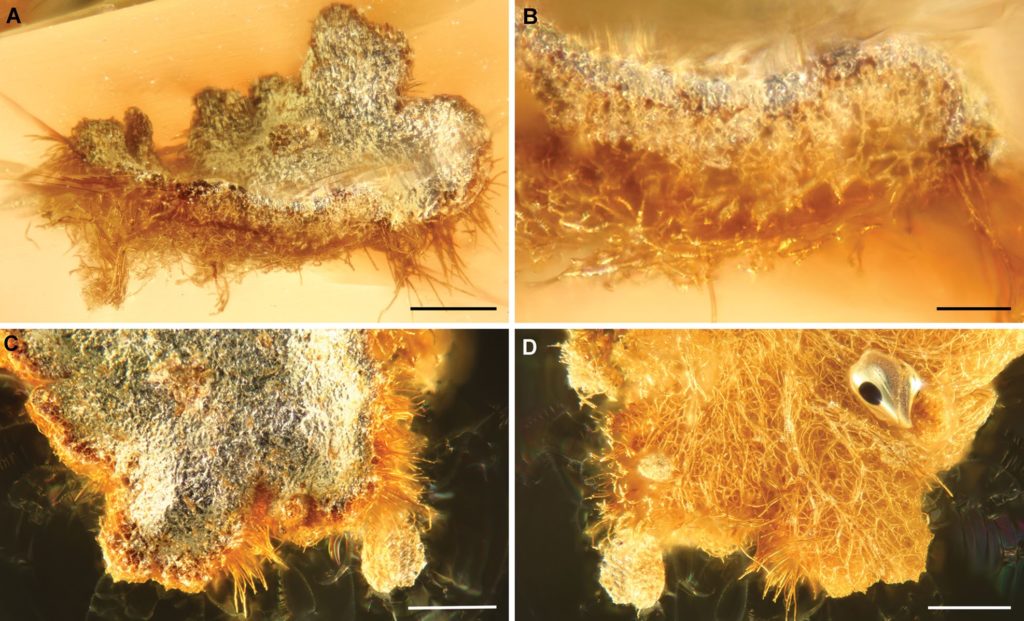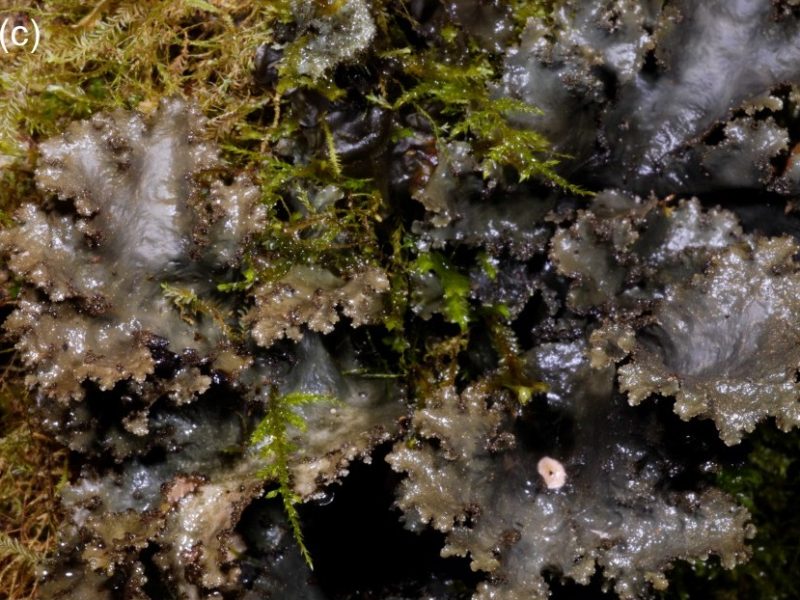Amber deposits are predominantly known from North America, Europe, and Asia, and are considered to be rare on the continents that formed Gondwana. However, more recently, deposits with fossil inclusions have also been reported from Ethiopia. The Miocene Ethiopian amber is the first fossiliferous amber known from Africa and includes, for example, diverse bryophytes and a lichen. The now discovered fossil bryophytes include four new species of liverworts and a pleurocarpous moss. The fossil liverworts belong to Lejeuneaceae and Frullaniaceae, families that are abundant and diverse also in modern tropical forests as well as in other amber deposits. The moss belongs to Isopterygium, a genus with many extant species in Africa but only few previous reports from European amber deposits. The fossil lichen represents the order Lecanorales in the Lecanoromycetes, which is the largest class of extant lichenized fungi. It is the first lichen fossil from Africa, making Ethiopian amber the fourth amber deposit containing lichens, along with the Miocene Dominican, and Paleogene Baltic and Bitterfeld ambers.
Bouju V, Feldberg K, Kaasalainen U, Schäfer-Verwimp A, Hedenäs L, Buck W, Wang B, Perrichot V, Schmidt AR. 2021. Miocene Ethiopian amber: a new source of fossil cryptogams. Journal of Systematics and Evolution 60: 932–954, doi.org/10.1111/jse.12796.

Keywords: Thysananthus aethiopicus, Lejeunea abyssinicoides, Frullania shewanensis, Frullania palaeoafricana

